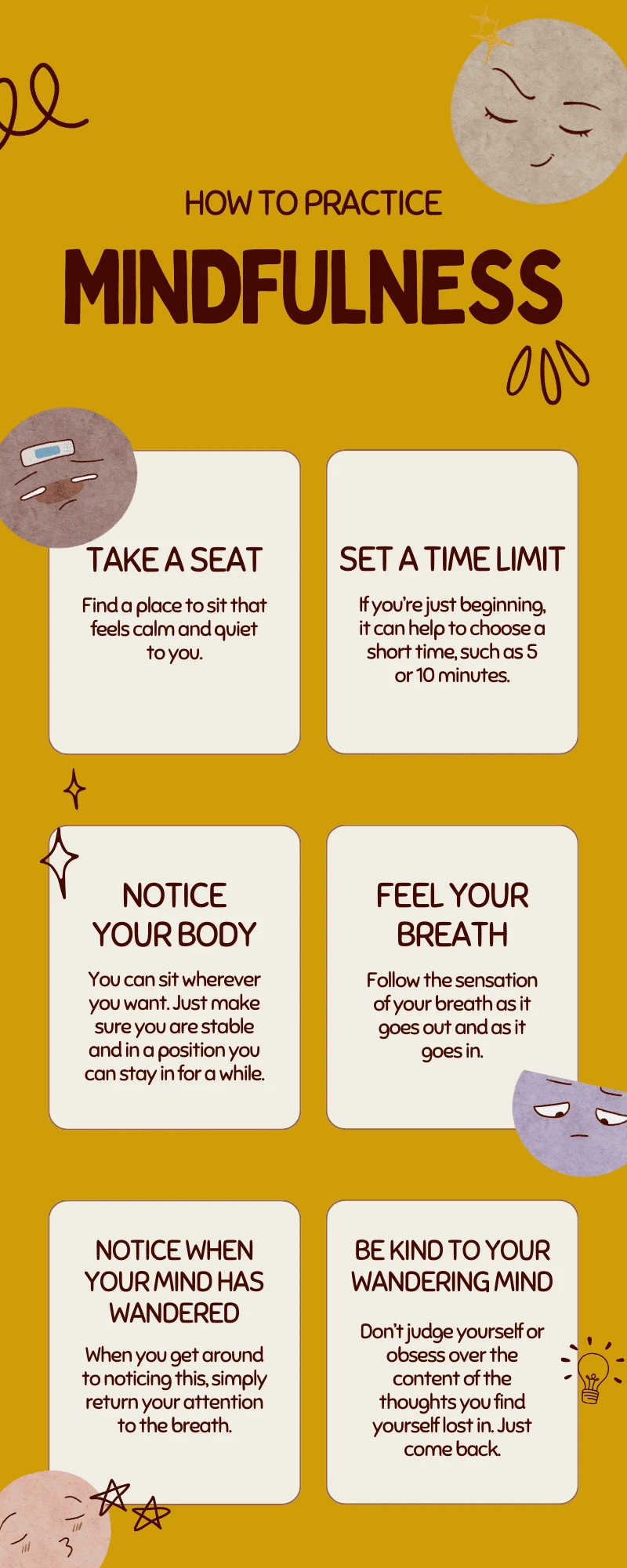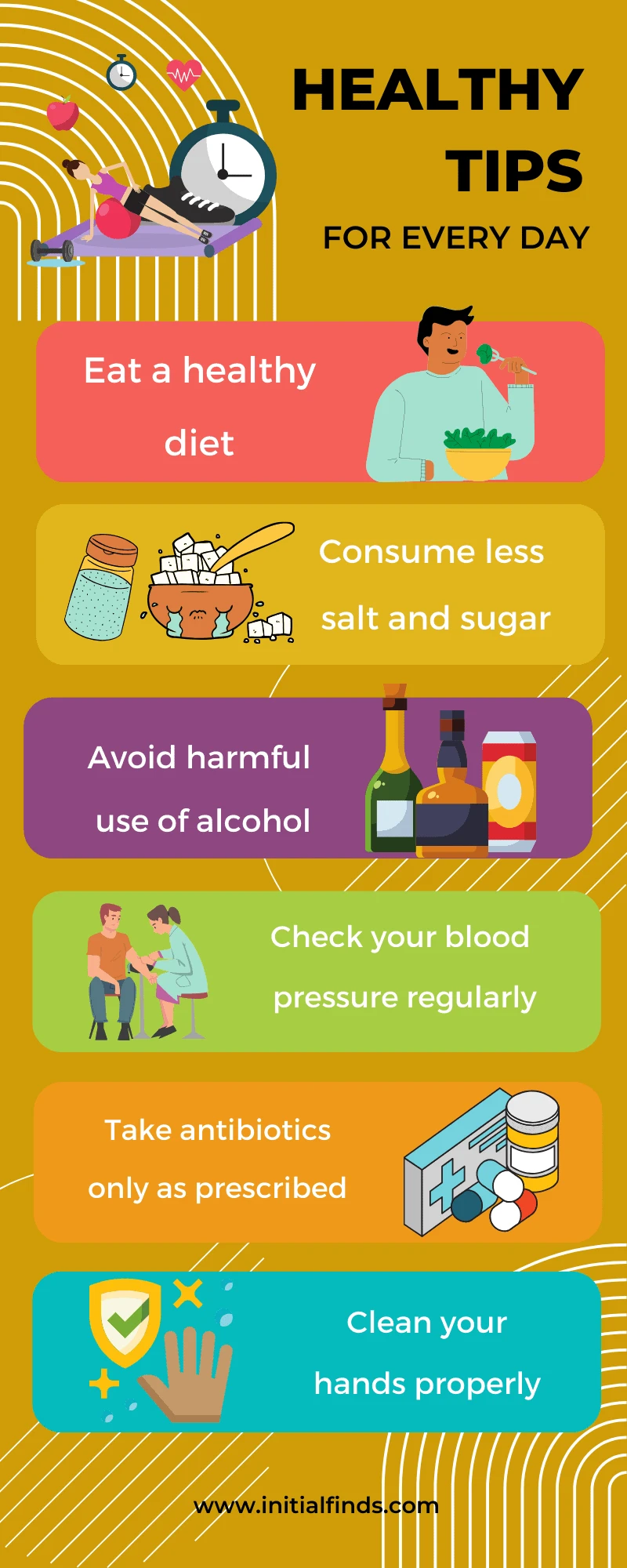This post contains affiliate links, which means we may earn a commission if you make a purchase, at no extra cost to you.
Dive into the world of daily routine examples for adults and discover how to reshape your day for the better. Are you on a quest to boost your productivity, enhance your health, or strike that elusive work-life balance?
We crafted this guide just for you, filled with practical steps and expert-backed strategies to help you design a daily schedule that truly fits your life and goals. Join us as we uncover the secrets to a more organized, healthier, and fulfilling daily life."
Being Present: The Key to Mindful Daily Routines

Introduction to Being Present
In the hustle of daily routines, it's easy to get caught up in the whirlwind of tasks and plans. Being present–or practicing mindfulness–is a crucial aspect of a fulfilling daily routine. It involves focusing on the current moment, being fully engaged in whatever you're doing, and cultivating an awareness that enhances both productivity and personal satisfaction.
I want to ensure you that this doesn't involve no woo-woo type of back story. Although there's nothing wrong with that, this can work for anyone.
Example:
Samantha's Practice: Samantha, a small business owner, sets aside time each day for 'mindful moments' where she focuses solely on her current activity, free from distractions or thoughts of other tasks. Whether it's during a short walk, while sipping her coffee, or in the middle of a work task, these moments of presence help her feel more connected and fulfilled.
Expert Resource:
Book: "The Power of Now" by Eckhart Tolle - A guide to spiritual enlightenment that emphasizes the importance of living in the present moment and disengaging from the constant chatter of the mind.
Incorporating Mindfulness into Daily Routines
Being present isn't just a separate activity; it's a mindset that can be woven into every part of your day. From mindful eating to attentive listening during conversations, this practice enriches experiences and improves mental clarity.
Example:
Tom's Approach: Tom, a software developer, practices mindful eating by focusing on the taste, texture, and aroma of his food, turning meals into a time of relaxation and enjoyment, rather than just a routine task.
Expert Resource:
App: Headspace - Provides guided meditations and mindfulness exercises suitable for integrating into various parts of the day, enhancing the practice of being present.

Benefits of Being Present
Embracing the present moment can have profound effects on your well-being. It reduces stress, improves focus, enhances relationships, and leads to a deeper appreciation of life. Incorporating mindfulness into your daily routine can transform mundane activities into enriching experiences.
Example:
- Nina's Transformation: Nina, a high school teacher, found that practicing mindfulness, especially during her classes, not only reduced her stress levels but also improved her engagement with students, making her teaching more effective and enjoyable.
Expert Resource:
- Website: Mindful.org - A resource hub offering practical tips, insights, and research on the benefits of mindfulness in everyday life.
Daily routing examples for Adults: Daily Structure
Understanding the Basics
Your daily routine is the backbone of your life. It's not just about filling your day with tasks; it's about crafting a schedule that aligns with your personal and professional aspirations. Begin by identifying the key components of your day – from essential duties to leisure activities. Allocate specific times for each, ensuring you have a balanced mix of work, rest, and play. Remember, a well-planned day leads to a fulfilled life.
Building Rituals and Habits
Habits, both good and bad, shape our lives more than we realize. Integrating positive habits into your daily regimen can be transformative. Start small – maybe it's a morning meditation or an evening walk.
Gradually, these small changes compound into a significant impact on your daily life. Identify and work on replacing habits that hinder your progress. This balance of adopting beneficial routines while shedding counterproductive ones is key to a harmonious daily life.
Actionable Steps:
- Create a list of daily activities and categorize them.
- Set specific times for work, exercise, relaxation, and sleep.
- Gradually introduce new, healthy habits into your daily schedule.
Example:
- Emma's Story: Emma, a freelance graphic designer, structures her day by dedicating mornings to creative work, afternoons for client meetings, and evenings for relaxation and family time. She uses a digital planner to allocate time slots for each activity, ensuring a balanced day.
Expert Resource:
- Book: "Deep Work" by Cal Newport - Offers insights into maximizing productivity through focused work and disciplined scheduling.
Fostering Health and Wellness in Your Routine
Prioritizing Physical Health
Incorporating physical activity into your day is crucial. Whether it's a morning jog, a midday yoga session, or an evening gym workout, find what invigorates you. Alongside exercise, focus on your sleep patterns. Aim for a consistent sleep schedule that allows for sufficient rest – it's a cornerstone of good health.
Maintaining Mental Health
Mental well-being is as vital as physical fitness. Activities like journaling, mindfulness exercises, or simply spending time in nature can significantly boost your mental health. These practices help in managing stress, enhancing focus, and fostering a sense of inner peace.
Actionable Steps:
- Schedule regular exercise into your day, tailored to your fitness level.
- Establish a consistent bedtime routine for adequate rest.
- Allocate time for mental health practices like meditation or journaling.
Example:
- John's Routine: John, a high school teacher, incorporates a 30-minute morning jog and a 15-minute meditation session into his daily routine. He finds these practices crucial for maintaining his physical and mental well-being.
Expert Resource:
- Website: MindBodyGreen (mindbodygreen.com) - A comprehensive resource for wellness tips, including physical fitness and mental health strategies.
Daily Routing Examples for Adults: Productivity and Efficiency
Effective Task Management
To elevate your productivity, begin by refining your approach to task management. Utilize a to-do list or a digital planner to prioritize your tasks. Identify your most important tasks (MITs) and tackle them first thing in the day when your energy levels are at their peak.
This strategy ensures that your key responsibilities get the attention they deserve, paving the way for a more productive day.
Optimizing Your Day
Optimization isn't just about doing more; it's about doing what's right. Assess how much time you spend on various activities and identify areas for improvement. Are there tasks that consume more time than they should?
Can we automate or delegate certain activities? By answering these questions, you can create a daily schedule that maximizes efficiency and minimizes time wastage.
Actionable Steps:
- Implement a prioritization system for your tasks, focusing on the most impactful ones.
- Review your daily activities and adjust your schedule to eliminate inefficiencies.
- Use time management tools and techniques to streamline your day.
Example:
Linda's approach: Linda, a project manager, uses the Pomodoro Technique to break her work at intervals, enhancing focus and preventing burnout. She also sets specific 'email checking' times to avoid constant distractions.
Expert Resource:
- App: Todoist - A task management tool that helps in organizing and prioritizing tasks effectively.
Special Focus: Perfect Morning routine and Evening Routines
Kick starting Your Day Right
A purposeful morning routine sets the tone for the day. Start by waking up at a consistent time–whether you're an early bird or a night owl, regularity is key. Engage in activities that energize and motivate you: a brisk walk, a healthy breakfast, or a few minutes of reading. Avoid the temptation of the snooze button–it's a small decision that can significantly affect your day's productivity.
Winding Down Effectively
Just as important as your morning routine is how you end your day. Evening routines are crucial for transitioning your mind and body into a restful state. This might include light stretching, reading, or planning for the next day. Steer clear of stimulating activities like video games or excessive screen time, especially in the late hours.
Actionable Steps:
- Design a morning routine that includes activities you enjoy and that energize you.
- Develop an evening routine that promotes relaxation and prepares you for a good night's sleep.
- Be consistent with your routines to solidify them as habits.
Example:
- Alex's Morning: Alex, an early riser, starts his day with a healthy breakfast and 20 minutes of yoga. He avoids checking his phone until his morning routine is complete.
- Alex's Evening: He ends his day by reading and planning the next day's tasks, which helps him unwind and sleep better.
Expert Resource:
- Podcast: "The Tim Ferriss Show" - Tim Ferriss often discusses effective morning and evening routines with various high achievers.

Balancing Work-Life in Your Routine
Integrating Family and Personal Time
Achieving a harmonious work-life balance is essential for a fulfilling daily routine. Allocate specific times for work and family, ensuring neither is neglected. Engaging in family activities or personal hobbies helps rejuvenate your spirit and keeps you grounded.
Work Efficiency Techniques
Being productive doesn't mean being busy all the time. It's about smart work. During your work hours, focus on tasks that require your expertise, delegating or postponing less critical activities. Take regular breaks–a lunch break spent away from your desk can significantly enhance your afternoon productivity.
Actionable Steps:
Set clear boundaries between work and personal time.
Plan regular family activities or personal time to disconnect from work.
Use techniques like the Pomodoro Technique for focused work sessions, followed by breaks.
Example:
Rachel's Balance: Rachel, a marketing consultant and mother of two, has set work hours from 9 AM to 3 PM. Post-work, she dedicates time to her children's activities and personal hobbies like painting.
Expert Resource:
Blog: Zen Habits by Leo Babauta (zenhabits.net) - Offers insights into balancing work and personal life.
Nutrition and Exercise: Pillars of a Healthy Routine
Eating Right and Staying Fit
Your diet plays a pivotal role in shaping your daily energy levels and overall health. Start your day with a nourishing breakfast and keep your healthy meal balanced and wholesome. Experiment with meal timings and compositions that best suit your body.
Regular exercise, whether it's a morning jog, a lunchtime walk, or an evening workout, boosts your physical and mental well-being. Remember, a healthy body is the foundation of a productive day.
Diet Trends and Tips
Exploring various diet trends can be beneficial, but always choose what aligns with your health goals and lifestyle. Intermittent fasting, for example, has gained popularity for its potential health benefits. However, it's important to approach such trends with informed choices. Staying hydrated throughout the day is another simple yet often overlooked aspect of a healthy routine.
Actionable Steps:
Plan meals that are nutritious and align with your daily energy needs.
Incorporate a mix of cardiovascular and strength exercises into your routine.
Stay informed about dietary trends and choose what resonates with your health goals.
Example:
Mike's Fitness Plan: Mike, an IT professional, ensures he has a protein-rich breakfast, takes short walks during his lunch break, and has an evening workout session thrice a week.
Expert Resource:
Website: MyFitnessPal - Provides tools for tracking diet and exercise, along with nutritional information and fitness tips.

Embracing Technology and Enough Sleep in Your Routine
The Tech Effect
In today's digital age, technology is a double-edged sword. While it can boost productivity and connectivity, excessive use can lead to distractions and stress. Use tech tools like apps and online calendars to streamline your tasks, but also set limits to avoid digital overload. Balance is key.
Optimizing Sleep Patterns
A restful night's sleep is non-negotiable for a successful routine. Establish a sleep schedule that ensures you get enough hours of sleep to feel rested and rejuvenated. Pay attention to your sleep environment. A comfortable, distraction-free bedroom is crucial for quality sleep.
Actionable Steps:
- Use technology to enhance, not hinder, your daily productivity.
- Set specific times to disconnect from digital devices, especially before bedtime. We recommend 30 minutes for no blue light before your bedtime.
- Create a sleep-conducive environment and establish a regular sleep schedule.
- Your alarm clock is most likely your phone, so make sure it is placed somewhere where you have to take at least 10-15 steps to get to it. You'll thank me later.
Example:
- Sarah's Tech Use: Sarah, a university student, uses apps like Forest to stay focused during study sessions and turns off electronic devices an hour before bedtime to ensure quality sleep.
Expert Resource:
- Book: "Why We Sleep" by Matthew Walker - A comprehensive guide on the importance of sleep and how to improve sleep quality.
Good Habit Formation and Maintenance
Building and Sustaining New Habits
Adopting new habits can be challenging, but it's essential for personal growth and improving your daily routine. Start with small, manageable habits and gradually build upon them. Consistency is key–it's the small daily actions that lead to significant changes.
Breaking Bad Habits
Identifying and breaking bad habits is just as important as forming new ones. Whether it's procrastination, overspending time on social media, or skipping workouts, acknowledge these habits and take deliberate steps to overcome them. Replace them with positive things that contribute to your goals.
Actionable Steps:
- Choose one small habit to start with and consistently incorporate it into your daily routine.
- Identify triggers for bad habits and replace them with healthier alternatives.
- Track your progress and celebrate small victories to stay motivated.
Example:
- David's Habit Change: David successfully replaced his habit of late-night snacking with herbal tea and reading, contributing to better sleep and weight management.
Expert Resource:
- Website: James Clear's Blog (jamesclear.com) - Offers in-depth articles on habit formation and behavior change, based on the principles from his book "Atomic Habits."
Final Words
Crafting an effective daily routine is a journey of self-discovery and discipline. By integrating these strategies into your life, you can create a healthy daily routines that not only boost productivity and health but also bring joy and fulfillment.
The best routine is the one that works for you. Experiment, adjust, and find your rhythm. Start today and take the first step towards mastering your day!
Related Articles:
- 5am Club Book Summary: Elevate your morning
- 21 Best Life coach blogs
- 21 Mindset Hacks you Need to Transform Your Life Forever
- Fixed vs Growth Mindset Examples: What are the differences?
- 21 Best Books for Self Discovery: Start your Amazing Journey
- Why is Grit Important to Growth Mindset: Develop Resilience
Some links on our blog may be affiliate links, which means we may earn a small commission if you make a purchase through them.


